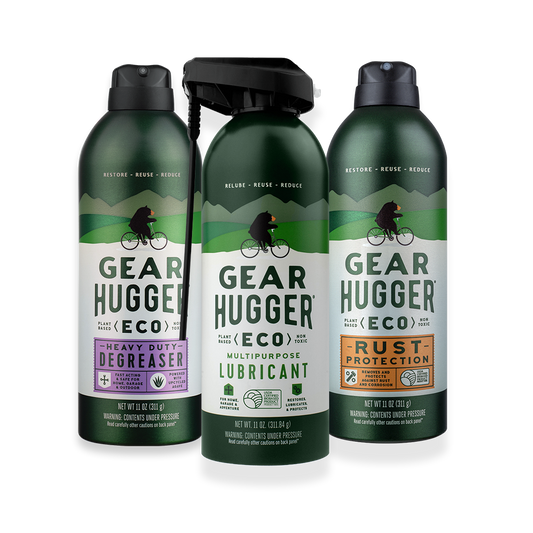Keeping your baby or toddler (including the four-legged kind) safe in your home requires going through each room and looking at things from an…errr…shorter perspective. Rather than crawling around on your hands and knees to see what dangers are in reach, we’ve done the legwork for you. Here are seven of our top tips for baby proofing your home.
- Cover floor vents - Use floor vent covers to prevent little hands and feet from getting scraped or cut on metal grates.
- Swap out toxic cleaners & petroleum-based lubricants - Gear Hugger Multi-purpose lubricant (a plant-based choice) is perfect for maintaining dozens of items, including baby and puppy gates, tricycles, toy box hinges, swings, and strollers. It’s so gentle it can even be used to clean high-touch surfaces like high chairs or for getting stubborn crayon off of places it shouldn’t be.
- Tie down any movable furniture or standing mirrors - Use straps to secure furniture and TVs or block access to them to prevent toddlers from pulling them down. You’d be surprised what crawling babies and walking toddlers are able to grab, so best to be on the safe side and secure as much as you can.
- Secure kitchen cabinets - Use magnetic locks for reachable kitchen cabinets to keep inquisitive kids from pots and pans, household cleaners, or from yanking on the gas line. Speaking of magnets, make sure there are no small magnets around the house that the baby can put in their mouth or accidentally swallow.
- Lock up liquor - Place a combo or key lock on liquor cabinets to keep those glass bottles out of reach.
- Keep an eye on lift cords for blinds - Children can become wrapped in these cords in the blink of an eye. Secure the cords to blinds on a higher hook to prevent risks to both babies and four-legged pets that can become tangled in them. There are tons of solutions that can help with this—find the one that works best for you and your home.
- Add outlet covers - This is a big one. According to the U.S. Consumer Product Safety Commission, roughly 7 children a day are admitted to the Emergency Room due to encounters with electrical outlets. There are many solutions to keep them covered depending on what kind of electrical outlets you have in your home, such as outlet covers or boxes.





